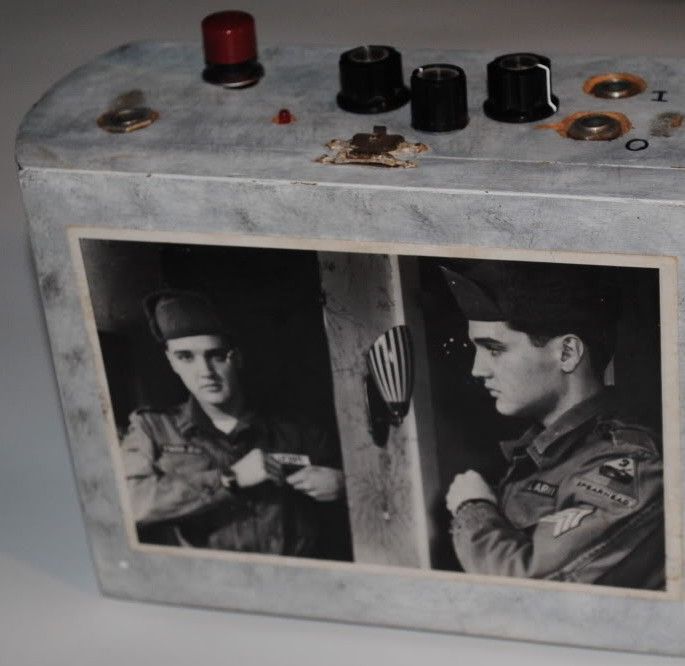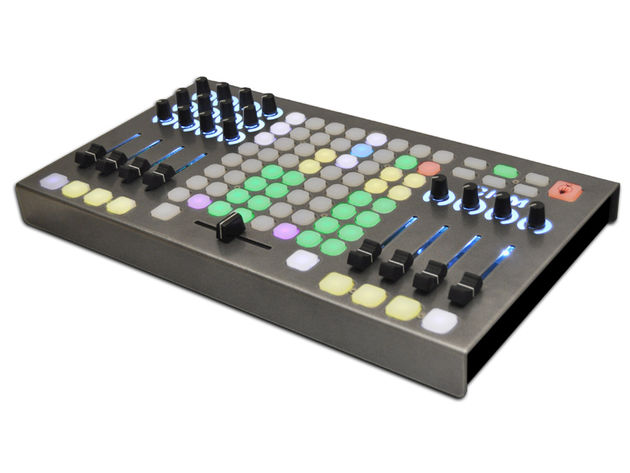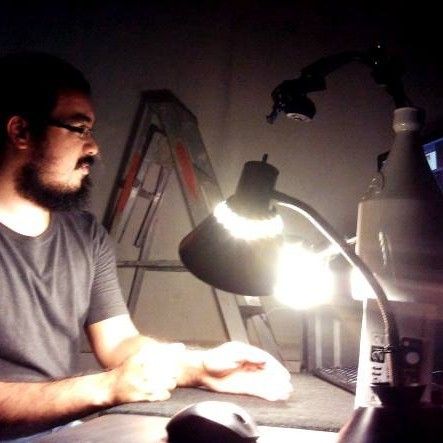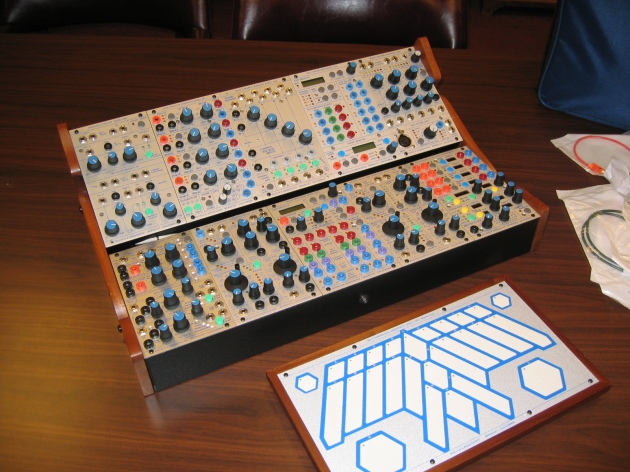Hand-gesture controlled sound synthesis
One of my main interests is working with interfaces for sound synthesis. Over the years I’ve been experimenting with a few different techniques to see how different interfaces inspire different styles of performance and how the interface affects the sound produced. Without having a clear goal, I’ve delved into circuit bending/ hardware hacking, computer-vision, touch screens and web/text based systems. Here are some of my findings:
Circuit Bending

Elvis box – Circuit Bent DS-1 Distortion
Circuit Bending provides a great introduction to incorrect electronics, the idea is that you use wires to randomly create connections within existing circuits (using only battery power, for safety) and explore the effect these connections have on the sound (or visual). I think this wires the brain in a great way because you expect failure, instead of total control you have only curiosity and luck. This got me thinking about how I was going to control these sounds. Why had I decided to use buttons, patch cables and knobs?
Synthesizers (buttons, knobs, cables and sliders)
Bob Moog was one of the pioneering commercial synth makers in the 60’s. These modular synths popularized the knob and patch cable style design that has dominated the field. To this day, synth makers default to knobs for interaction, although patch cables are seen much less often.
Alternatively, the Buchla incorporated capacitive touch interfacing (since the late 80’s). Let’s skip ahead a few years.
Computers

More recently, virtual synth programs also adopted the patching style of design. Although these allow for complex algorithmic control, they still retained the slider/button/knob paradigm. I’ve had a bit of conflict with this because although sliders are very familiar to us and are useful for basic control, this is the result:
A bunch of guys behind laptops. Very entertaining to watch. Addressing the need for better access to control interface makers have opted to return to the physical world for control of their virtual synthesis systems, but guess what?

buttons… knobs… and sliders.
This got me thinking about what other interfaces are there? Could there possibly be a solution that can give performers greater control (both physical and digital) over the system and provide a much more engaging aesthetic experience?
New Interfaces for Musical Expression
The reactable is a tangible interface which allows for “physical” control over sound synthesis parameters. I built my own and experimented to a limited degree. While I was pleased to see an effective alternative to the good ol’ sliders and knobs, I still felt limited in the amount of control I had over the sound due to the physical relationship between the objects and the restriction to 2 dimensions. Enter Daito Manabe:
Nice.
The MANO controller really caught my attention, so I built one.

This is by far the most expressive and powerful interface I’ve come across. And I plan to expand on it.



Have you seen Illucia? The know the guy that makes it, if you want to get in touch:
www.paperkettle.com/home/
Also, Sparkfun just started selling this on Friday:
www.sparkfun.com/products/13146